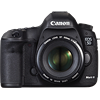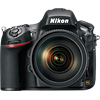Main
Model
Price
Advantages
launch
Announced
Body type
Camera subcategory
Sensor
Effective pixels
Max resolution
Sensor size
Sensor type
Processor
Image ratio w:h
Other resolutions
Sensor photo detectors
Image
ISO
Boosted ISO (minimum)
Boosted ISO (maximum)
White balance presets
Custom white balance
Image stabilization
Uncompressed format
JPEG quality levels
Photography features
Minimum shutter speed
Maximum shutter speed
Aperture priority
Shutter priority
Manual exposure mode
Subject / scene modes
Built-in flash
External flash
Continuous drive
Self-timer
Metering modes
Exposure compensation
AE Bracketing
WB Bracketing
Flash range
Flash modes
Screen / viewfinder
Articulated LCD
Screen size
Screen dots
Touch screen
Screen type
Live view
Viewfinder type
Viewfinder coverage
Viewfinder magnification
Videography features
Resolutions
File Format
Videography notes
Microphone
Speaker
Optics & Focus
Autofocus
Digital zoom
Manual focus
Number of focus points
Lens mount
Focal length multiplier
Physical
Weight (inc. batteries)
Dimensions
Environmentally sealed
Battery
Battery details
Battery Life (CIPA)
Storage
Storage types
Storage included
Connectivity
USB
HDMI
Wireless
Wireless notes
Remote control
Other features
Orientation sensor
Timelapse recording
GPS
GPS notes
Samples
Videos
Summary
The D800 highest resolution of 7360 x 4912 pixels (36 megapixels) is better in comparison with the EOS 5D Mark III highest resolution of 5760 x 3840 pixels (22 megapixels). The EOS 5D Mark III is equipped with larger sensor compared to the D800: Full frame (36 x 24 mm) versus Full frame (35.9 x 24 mm). It is the most significant advantage of this model as large sensor lets the camera owner to take pictures of the more professional quality. The EOS 5D Mark III has a wider ISO range of 100-25600 than 100-6400 ISO range of the D800. This ISO range let the camera owner to take good quality pictures in dim light situations. The D800 has more presets of white balance - 12. This specification gives the camera owner more control over colour. The EOS 5D Mark III has more focus points than the D800: 61 vs 51. More number of focus points means more convenience when attempting to focus on subjects that are not centred.
The EOS 5D Mark III display is better as it offers more screen dots 1,040,000 in compare to 921,000 dots of the D800 screen. The higher dot count display is better for reviewing pictures on your camera.
The D800 has built-in flash. The Canon EOS 5D Mark III weighs 950g that is 50g less in comparison with the weight of the Nikon D800.
Considering the above differences the EOS 5D Mark III will be the best choice. Get the lowest price on Amazon.


